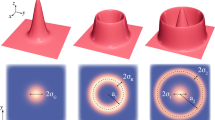Abstract
Fluidized bed machining (FBM) was developed for use in polishing, deburring, edge contouring, and other areas for parts with complex geometry. Recently, FMB was studied to determine the final surface roughness of machined 3-dimensional parts. The researchers have been studying the system configuration and FBM process parameters, but most research has focused on experimental approaches and applications of FBM. In this study, experimental studies on the process parameters and computational fluid dynamics (CFD) simulations of FBM on a stainless steel 304 (SS304) substrate were performed. Alumina particles were used in FBM experiments. CFD simulations were used to examine the particle velocity in the chamber and the shear stress acting on the SS304 substrate due to changes in the main shaft rotation speed and air pressure during the FBM process. The experimental results show that the material removal rate (MRR) increases as the rotation speed of the specimen increases, and MRR is greatest when the air pressure reaches 0.04 MPa. CFD analysis may be helpful for designing FBM equipment and optimizing FBM process.
Similar content being viewed by others
References
M. Barletta, Progress in abrasive fluidized bed machining, Journal of Materials Processing Technology, 209 (2009) 6087–6102.
M. Barletta, A new technology in surface finishing: Fluidized bed machining (FBM) of alluminium alloys, Journal of Materials Processing Technology, 173 (2006) 157–165.
K. L. Tan, S.-H. Yeo and C. H. Ong, Nontraditional finishing processes for internal surface and passages: A review, Proc. of the Institution of Mechanical Engineers, Part B: Journal of Engineering Manufacture, 231 (13) (2016) 2302–2316.
M. Massarsky and D. A. Davidson, Turbo-abrasive machining and finishing, Metal Finishing, 95 (7) (1997) 29–31.
M. Barletta, L. Santo and V. Tagliaferri, Technical application of the fluidized bed, Proc. of the 5thAITEM Conference, Italy (2001) 18–20.
R. Polini, M. Barletta and M. Delogu, Fluidized bed micro-machining and HFCVD of diamond films onto co-cemented tungsten carbide (WC-Co) hardmetal slabs, Thin Solid Films, 515 (2006) 87–94.
M. Barletta and S. Guarino, High speed finishing of a CuZn15 brass alloy by abrasive recirculating fluidized bed (ARFB), Powder Technology, 203 (2010) 591–602.
Y. Jang, H. Hwang, J. Seo, D. Lee and H. Lee, Effect of rotating speed and air flow rate on material removal characteristics in abrasive fluidized bed machining of polyacetal, Tribol. Lubr., 33 (5) (2017) 214–219.
N. K. Francis, K. G. Viswanadhan and M. M. Paulose, Swirling abrasive fluidized bed machining: Effect of process parameters on machining performance, Materials and Manufacturing Processes, 30 (7) (2015) 852–857.
F. Pietrobono, G. Rubino, V. Tagliaferri and F. Trovalusci, Sample position inside abrasive fluidized bed to obtain morphology uniformity, The International Journal of Advanced Manufacturing Technology, 103 (1-4) (2019) 49–61.
E. Atzeni, M. Barletta, F. Calignano, L. Iuliano, G. Rubino and V. Tagliaferri, Abrasive fluidized bed (AFB) finishing of AlSi10Mg substrates manufactured by direct laser sintering (DMLS), Additive Manufacturing, 10 (2016) 15–23.
I. Hulme, E. Clavelle, L. V. D. Lee and A. Kantzas, CFD modeling and validation of bubble properties for a bubbling fluidized bed, Industrial & Engineering Chemistry Research, 44 (2005) 4254–4266.
M. M. Kumar and E. Natarajan, CFD simulation for two-phase mixing in 2D fluidized bed, International Journal of Advanced Manufacturing Technology (2009) 1–4.
FLUENT 6.1 User’s Guide, 22.4 Eulerian Model, Fluent, Inc. (2003).
M. Syamlal and T. J. O’Brien, Simulation of granular layer inversion in liquid fluidized beds, International Journal of Multiphase Flow, 14 (4) (1988) 473–481.
FLUENT 12.0 Theory Guide, 4.4 Standard, RNG, and Realizable k-ε Models, Fluent, Inc. (2009).
H. Guo, Y. Wu, D. Lu, M. Fujimoto and M. Nomura, Effect of pressure and shear stress on material removal rate in ultra-fine polishing of optical glass with magnetic compound fluid slurry, Journal of Materials Processing Technology, 214 (11) (2014) 2759–2769.
H. Lee, Tribology research trends in chemical mechanical polishing (CMP) process, Tribol. Lubr., 34 (3) (2018) 115–122.
H. Lee and I. Sung, Chemical mechanical polishing: A selective review of R&D trends in abrasive particle behaviors and wafer materials, Tribol. Lubr., 35 (5) (2019) 274–285.
F. Preston, The theory and design of plate glass polishing machines, Journal of the Society of Glass Technology, 11 (1927) 214–256.
Acknowledgments
This research was supported by BB21+ Project in 2019 and Basic Science Research Program through the National Research Foundation of Korea (NRF) funded by the Ministry of Education (NRF-2015R1D1A1A01059266 and NRF-2018R1 D1A1B07043169).
Author information
Authors and Affiliations
Corresponding author
Additional information
Recommended by Editor Hyung Wook Park
Taekyoung Kim is a Master’s Student of the Department of Mechanical System Engineering, Tongmyong University, Bu-san, Korea. He received his B.S. in Mechanical Engineering from Tong-myong University. His research fields include CFD simulation and abrasive fluidized bed machining.
Hyunseop Lee is an Assistant Professor of the School of Mechanical Engineering, Tongmyong University, Busan, Korea. He received his B.S., M.S. and Ph.D. degrees in Mechanical Engineering from Pusan National University. His research fields include chemical mechanical polishing, grinding, abrasive fluidized bed machining and tribology.
Rights and permissions
About this article
Cite this article
Kim, T., Lee, H. Simulation and experimental analysis of abrasive fluidized bed machining process. J Mech Sci Technol 34, 2153–2160 (2020). https://doi.org/10.1007/s12206-020-0436-5
Received:
Revised:
Accepted:
Published:
Issue Date:
DOI: https://doi.org/10.1007/s12206-020-0436-5




